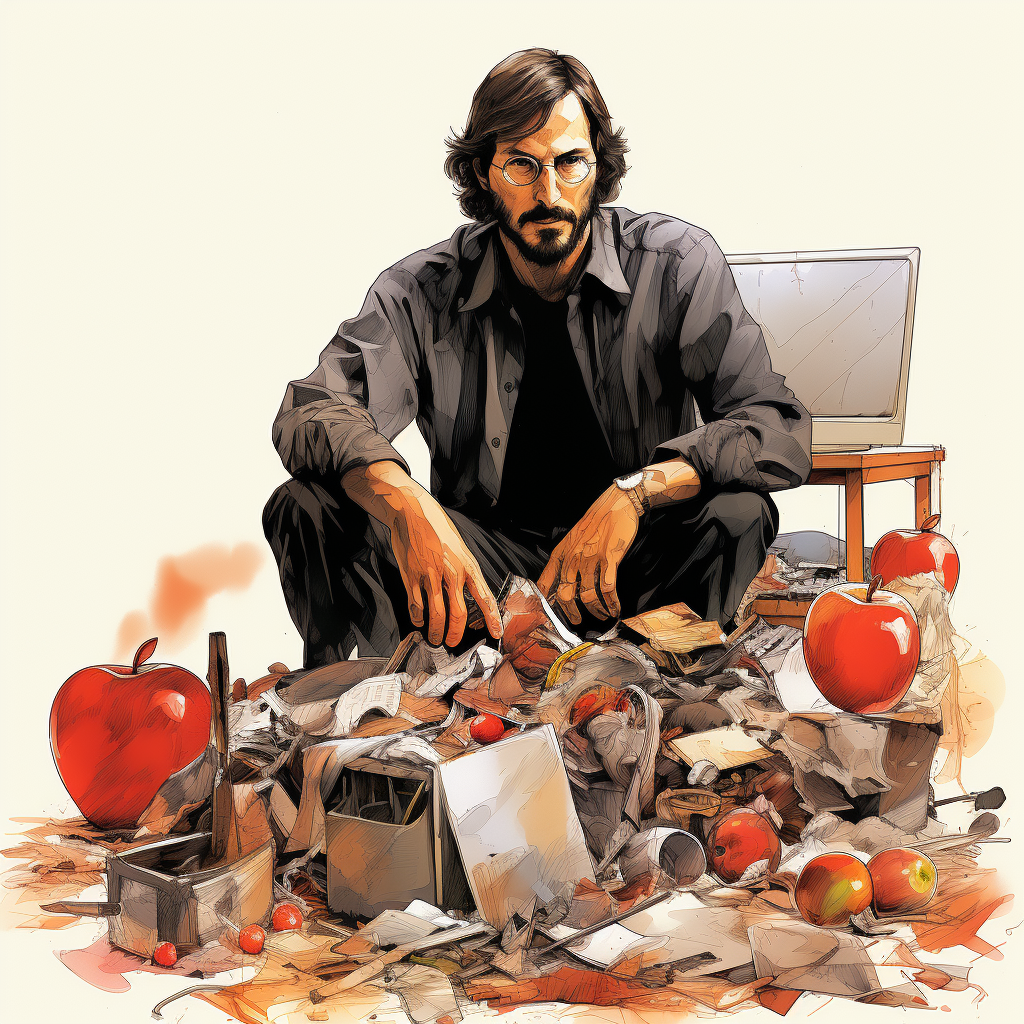Steve Jobs and The Return to Apple

In a dramatic turn of events emblematic of a phoenix rising from the ashes, Steve Jobs returned to Apple in 1997 at a time when the company was on the brink of bankruptcy.
His comeback marked the beginning of a historic turnaround, transforming Apple from a struggling entity into one of the most valuable companies in the world.
This period in Jobs' career is a profound study in strategic decision-making, brand rejuvenation, and the art of leading a company through a significant transformation.
Factual Details of Jobs' Return to Apple
Year: 1997
Location: Cupertino, California, USA
Event: Steve Jobs Returns as Interim CEO of Apple
When Steve Jobs returned to Apple in 1997, the company was facing dire financial straits. The decision to bring Jobs back was part of a strategy to revitalize the company, which included a significant investment from Microsoft. Jobs immediately began a process of restructuring the company, simplifying the product line, and focusing on design and innovation. His return to leadership was marked by the launch of groundbreaking products like the iMac, iPod, and eventually the iPhone and iPad.
Key Outcomes:
- Apple's dramatic turnaround, becoming a leading technology company.
- Introduction of a series of successful products that redefined multiple industries.
- A renewed corporate culture focused on innovation, design, and user experience.
Leadership Lessons from Jobs' Return and Apple's Revival
1. Visionary Leadership in Revival:
- Jobs' ability to envision a new future for Apple and steer the company towards it demonstrates the power of visionary leadership in corporate turnarounds.
2. Strategic Simplification:
- Jobs simplified Apple’s product line upon his return, focusing on a few key products. This strategy underscores the importance of focusing on core strengths and simplifying operations to rejuvenate a brand.
3. Cultivating a Culture of Innovation:
- Reinforcing a culture of innovation was central to Apple's revival, highlighting how a company’s culture can significantly impact its success.
4. Emphasis on Design and User Experience:
- Jobs' focus on design and user experience became a hallmark of Apple’s products and a key factor in its success, showing the importance of these elements in product development.
5. Strategic Risk-Taking:
- Jobs’ decisions, from cutting certain products to launching the iPod and iPhone, involved significant risks but ultimately paid off, illustrating the role of strategic risk-taking in successful leadership.
Concluding Thoughts
Steve Jobs' return to Apple and the subsequent revival of the company is a remarkable tale of strategic leadership, innovation, and brand transformation. It serves as an inspiring example of how leaders can guide organizations through periods of turmoil and reposition them for success. Jobs' approach to revitalizing Apple underscores the importance of having a clear vision, making strategic decisions, and fostering a culture that aligns with the organization's overarching goals.
Your Reflection
Reflect on Jobs’ approach to turning Apple around and consider:
- How can you apply strategic thinking and visionary leadership to overcome challenges in your organization?
- In what ways can focusing on core strengths and simplifying operations benefit your business or team?
- How might you foster a culture of innovation and design thinking within your organization?
- What strategic risks could you take to propel your organization forward?



